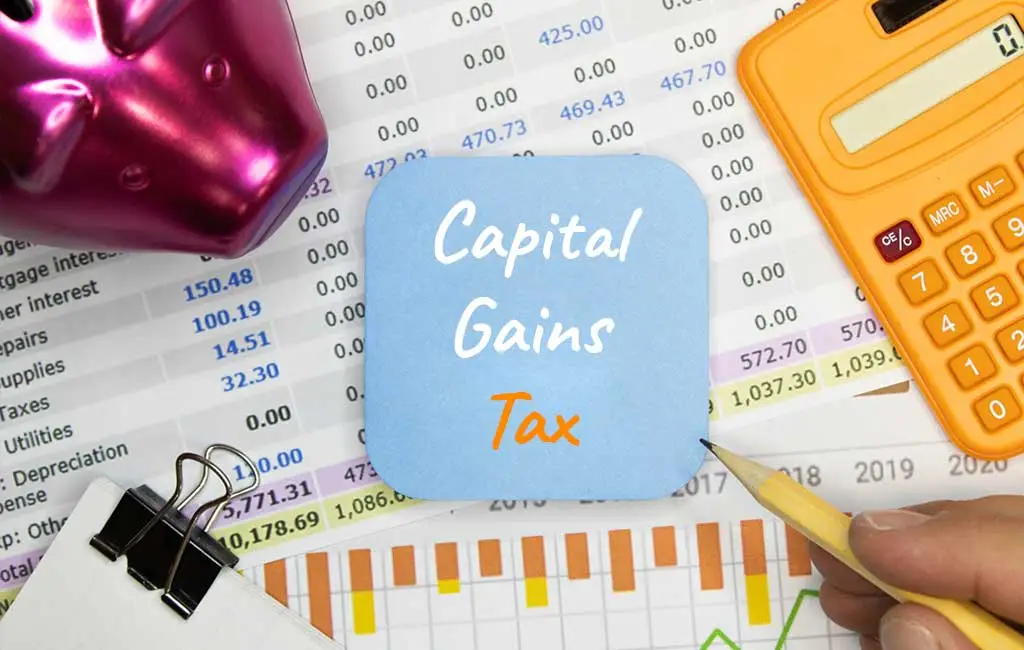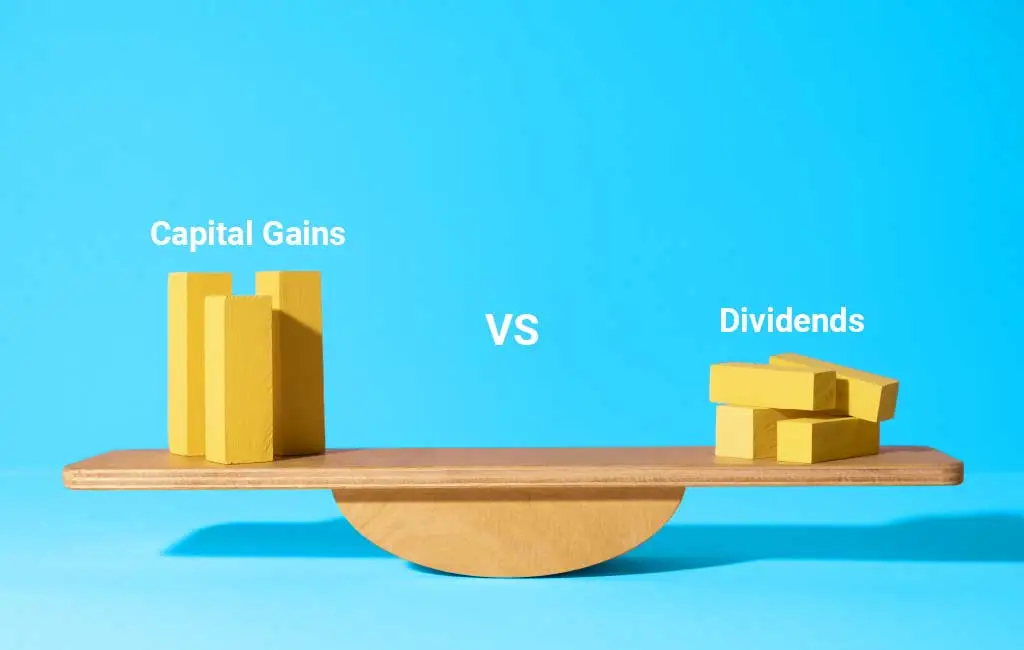Navigating the world of investments can be complex, especially when understanding the tax implications of stocks. One of the most common questions among investors is, “Do you have to pay taxes on stocks?” The answer is yes, but the extent to which you are taxed depends on various factors, including the type of stock investments, how long you’ve held them, and the profits you’ve realized. This article aims to demystify the tax obligations related to stock investments and give you the knowledge to manage your portfolio more effectively.
What is the Capital Gains Tax?
Capital gains tax is imposed on an investor’s earnings upon selling an investment for a profit. This tax applies in the tax year the investment is liquidated. Essentially, it’s the government’s share of your profit from your investment activities.
For the tax years 2023 and 2024, the rates applied to long-term capital gains — earnings from investments held for more than a year — are structured to be either 0%, 15%, or 20%. The specific rate applicable to an investor depends on their taxable income, with these brackets subject to annual adjustments to reflect economic changes.
Investors are subject to long-term capital gains tax on their earnings from any investment they’ve held for over twelve months. Conversely, the profits are taxed as short-term capital gains if an investment is held for a year or less before being sold.
The rate for short-term gains aligns with the investor’s standard income tax bracket, which for most taxpayers is higher than the rates for long-term capital gains. This difference in tax rates underscores the tax advantages of holding investments for longer periods, encouraging a more long-term approach to investment strategy.

How Capital Gains Taxes Work
Short-term capital gains apply to assets held for up to one year and are taxed at the same rate as your regular income. Long-term capital gains, on the other hand, are for assets held for more than a year and benefit from reduced tax rates. The rate for long-term gains can vary based on your taxable income and filing status.
Capital gains taxes are levied on the profit from selling investments like stocks when those investments are sold or “realized.” This means that as long as an investment is not sold, regardless of its increase in value over time, it does not incur capital gains tax. The tax is triggered only upon the sale of the investment, making the sale timing crucial for tax implications.
The U.S. federal tax system categorizes profits from sold assets into short-term and long-term capital gains, with the distinction based on how long the asset was held before being sold. Long-term capital gains from assets held for more than one year are taxed at favorable rates of 0%, 15%, or 20%, depending on the investor’s income bracket. This tiered structure provides a financial incentive for investors to hold onto their investments for longer than a year, benefiting from lower tax rates on the profits from those sales.
Conversely, profits from the sale of assets held for less than a year are considered short-term capital gains and are taxed at the investor’s regular income tax rate, typically higher than the long-term capital gains tax rate. This distinction is particularly relevant for day traders and those who frequently buy and sell assets within a year, as they face higher profit tax rates.
Moreover, the tax system allows for offsetting taxable capital gains with any capital losses incurred during the same year, allowing investors to pay taxes only on their net capital gains. This provision can significantly reduce the tax burden on investors by allowing them to deduct losses from their total taxable gains.

Understanding Capital Gains Vs. Dividends
When it comes to the taxation of stocks, investors encounter two primary forms of taxes: capital gains taxes and taxes on dividends, each with its own rules and rates. Dividends are payments made by a corporation to its shareholders, often derived from the company’s profits. While capital gains are taxed based on the sale and profit of an asset, dividends are taxed as income.
However, qualified dividends may receive more favorable tax treatment, akin to long-term capital gains. Understanding these distinctions and planning accordingly can lead to significant tax savings and influence investment strategies, especially when considering the timing of buy and sell decisions and choosing dividend-paying stocks.
Taxation on Capital Gains
- Short-term Capital Gains: These are incurred when assets, such as stocks, are sold after being held for a year or less. The tax rate applied to short-term capital gains aligns with the investor’s general income tax bracket, which means the rate can vary widely based on overall annual income.
- Long-term Capital Gains: In contrast, profits from the sale of assets held for more than a year are subjected to long-term capital gains tax. These rates are notably more favorable, set at 0%, 15%, or 20%, depending on the investor’s taxable income and filing status. The incentivization here is clear: holding onto investments for longer than a year can significantly reduce the tax burden on realized gains.
Taxation on Dividends
Dividends are categorized for tax purposes into two types: qualified and nonqualified.
- Qualified Dividends: These dividends are taxed at the same favorable rates as long-term capital gains (0%, 15%, or 20%), again dependent on the investor’s taxable income and filing status. To qualify, dividends must meet specific criteria set by the IRS, including being paid by a U.S. corporation or a qualified foreign corporation and meeting certain holding period requirements.
- Nonqualified Dividends: Also known as ordinary dividends, these are taxed at the investor’s regular income tax rate, similar to short-term capital gains. This rate is generally higher than that for qualified dividends, resulting in a larger tax liability for the investor.
Ownership duration and the type of dividend-paying investment significantly influence the tax implications of dividends. With numerous exceptions and specialized tax scenarios, investors are encouraged to consult IRS Publication 550 for comprehensive details and guidance.

Calculating Your Capital Gains
Determining your taxable capital gains involves a process that accounts for both your gains and losses over the fiscal year. This calculation can become intricate, especially when dealing with a mix of short-term and long-term investments that have both appreciated and depreciated in value.
To accurately calculate your capital gains, you should begin by categorizing your investments based on their duration before being sold. Separate your investments into two groups: those held for a year or less (short-term) and those held for more than a year (long-term).
Once categorized, compile all your short-term gains and calculate their total sum. Perform a similar calculation for your short-term losses. This process is then repeated for your long-term investments, aggregating all long-term gains and all long-term losses.
The next step is to offset your gains with your losses within the same category. Subtract your total short-term losses from your total short-term gains. This calculation will give you a net short-term gain or loss. The same method applies to long-term transactions, where you subtract your long-term losses from your gains to find your net long-term position.
By following this methodical approach, you can accurately determine your net capital gains or losses, both short-term and long-term, which will form the basis for your taxable gains calculation for the year. This process ensures that you are only taxed on your net investment income, allowing for the possibility of reducing your tax obligation by offsetting gains with losses.
Avoiding Capital Gains Taxes
Investing wisely not only involves choosing the right assets but also managing the tax implications of your investments. While capital gains taxes are a part of the investment landscape, there are several legal avenues to reduce these taxes.
Hold Investments for More Than One Year
The duration you hold an investment significantly impacts the tax rate applied to its gains. Profits from investments held for over a year are taxed at the lower long-term capital gains rate, whereas profits from investments held for a shorter period are taxed as regular income, often at a higher rate.
Utilize Investment Losses
Capital losses can offset capital gains, reducing your taxable income. If your losses exceed your gains, you can deduct the difference from your income, up to a limit of $3,000 per year. Should your losses surpass this threshold, you have the option to carry them forward to future tax years, applying them against future capital gains.
Account for Qualifying Expenses
Expenses incurred in acquiring or maintaining an investment can increase its cost basis, effectively reducing the taxable profit when the investment is sold. Keeping detailed records of such expenses is crucial for accurately determining the investment’s cost basis and the resulting capital gains.
Invest in Tax-Advantaged Accounts
Placing securities in accounts like 401(k)s or IRAs offers tax benefits, including deferring taxes on gains until the funds are withdrawn. These accounts restrict liquidity and withdrawal options but allow more flexibility in trading securities without immediate tax consequences.
Explore Exclusions
Certain exclusions can significantly reduce capital gains taxes, especially concerning real estate. For instance, rules surrounding the sale of a primary residence can allow you to exclude a portion of the gains from taxes. Familiarizing yourself with these rules and planning sales to meet exclusion criteria can lead to substantial tax savings.

Capital Gains Tax Strategies
Navigating different aspects of capital gains tax can be daunting for investors, but with strategic planning, it’s possible to minimize the taxes owed on investment profits. Understanding how capital gains tax works and employing strategies to reduce tax liability can significantly impact your financial health.
1. Harvesting Losses to Offset Gains
If you’ve sold investments at a gain this year, consider selling underperforming assets to realize losses. For example, if you made a $5,000 profit on one stock but faced a $2,000 loss on another, selling the loss-making asset allows you to report a net gain of $3,000, lowering your taxable income.
The IRS allows investors to deduct up to $3,000 in excess losses against their ordinary income per year. If your losses exceed your gains by more than $3,000, you can carry forward the remaining loss to future years. Suppose you have $10,000 in losses and $4,000 in gains. After offsetting the gains, you can still deduct $3,000 from your income this year and carry forward the remaining $3,000 to next year.
2. Understanding the Wash-Sale Rule
The wash-sale rule prevents taxpayers from claiming a tax deduction for a security sold in a wash sale. A wash sale occurs if you sell a security at a loss and then repurchase the same security, or one substantially identical, within 30 days before or after the sale. For instance, selling a stock at a $1,000 loss and buying it back within the 30-day window disallows the deduction.
To avoid the wash-sale rule, wait at least 31 days before repurchasing the same stock or consider buying a different stock that serves a similar strategic purpose in your portfolio.
3. Maximizing Contributions to Retirement Accounts
Contributing to tax-advantaged retirement accounts like IRAs and 401(k)s allows your investments to grow tax-deferred or even tax-free in the case of Roth accounts. For example, if you contribute $6,000 to a traditional IRA, any capital gains or dividends generated within this account won’t be taxed annually, potentially saving you thousands until withdrawal.
Plan your withdrawals to coincide with lower-income years to reduce tax liability. Withdrawing funds from a traditional IRA during a year when your income is lower could result in paying taxes at a lower rate.
4. Cash in After Retiring
Retirement typically comes with a lower income level. Selling investments when your income is lower can qualify you for lower long-term capital gains tax rates. For instance, a retiree falling into the 0% capital gains tax bracket could sell long-held stocks without owing federal taxes on the gains.
5. Aiming for Long-Term Gains
Assets held for more than a year before selling qualify for the lower long-term capital gains tax rates. For example, selling a stock after holding it for 366 days could result in a significantly lower tax rate on the profit compared to selling it at 364 days, emphasizing the importance of monitoring holding periods closely.
6. Choosing a Specific Share Identification
When selling part of an investment, you can specify which shares to sell to optimize your tax outcome. For instance, if you bought shares of a stock at different times and prices, electing to sell the shares bought at the highest price minimizes the capital gain or maximizes the loss on the sale.
By applying these strategies, investors can navigate the complexities of capital gains taxes more effectively, potentially saving money and optimizing their investment returns. As always, consult with a tax professional to tailor these strategies to your specific financial situation.

Final Words
Grasping the intricacies of how taxes apply to stock investments is crucial for every investor. By gaining a comprehensive understanding of whether you have to pay taxes on stocks, including the nuances of capital gains taxes and how they differ from dividends, you equip yourself to navigate the tax landscape more effectively. This knowledge enables you to implement strategies that can reduce your tax burden and enhance the overall return on your investments.
So, Do You Have to Pay Taxes on Stocks?
Although the tax obligations associated with stocks may add complexity to your investment approach, they should not dissuade you from participating in the stock market. Rather, consider tax planning as an integral part of your investment strategy, one that requires attention and careful management to optimize your financial outcomes.
FAQs
How much tax do you pay on stocks?
The amount of tax you pay on stocks depends on how long you’ve held the asset and your income bracket. For assets held more than a year, the capital gains tax rates are 0%, 15%, or 20%, providing a more favorable tax scenario for long-term investments. However, for assets held for a year or less, the gains are taxed at your ordinary income rate, which ranges from 10% to 37%, aligning with the standard tax brackets.
How do you avoid taxes on stocks?
Several strategies can be employed to minimize or even avoid taxes on stock gains. Holding onto stocks for over a year can qualify you for the reduced long-term capital gains rates. Investing through tax-advantaged accounts like IRAs can also shield your gains from immediate taxation. Moreover, tax-loss harvesting—selling stocks at a loss to offset gains—can reduce your taxable income, providing a useful tool for managing your tax liability.
Are there any tax implications if I donate stocks to charity?
Donating stocks to charity comes with its own tax benefits. When you contribute stock to a charitable organization, you’re typically allowed to deduct the full fair market value of the stock at the time of the donation. This approach supports the causes you care about and offers a tax-efficient way to contribute, potentially reducing your taxable income without requiring you first to sell the stock and incur capital gains taxes.








